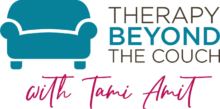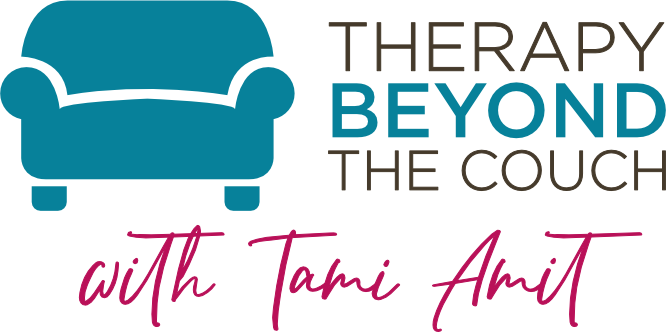The ‘I don’t have power or control’ core belief
The Core Belief Quiz
The Core Belief that is sabotaging your life and blocking your growth is:
“I have no power or control.”
Dear Friend,
Your core belief, “I have no power or control” is a lie your brain has been telling you for years. You can come up with hundreds of experiences that supposedly prove this belief, but that is only because it controls what you pay attention to (and what you ignore), how you interpret the world, and how you make sense of your place in it. That’s why this belief seems valid, but it is not!
Perhaps there were many times, in your childhood, when you felt that you had no control, or the people in your life seemed to be out of control (which can be terrifying to a child). This is not a life-long truth and does not need to define your experience of reality.
You may already know in your conscious mind that this belief is false (and that’s great!), but in your subconscious mind, which controls up to 95% of your daily life, this belief is a foundational truth!
And so you continue to attract people and situations to your life that validate the belief, “I am a burden.”
Your own version of this core belief may be “I am powerless,” “I am out of control,” “I am weak,” or “I am useless.” These are just different versions of the same belief.
Becoming aware of your Core Belief is an essential part of taking back control of your life and creating the life you desire.
What about You?
When life gets hard, you buckle down, do the work, and make sure everything is organized and in its place. You love lists. You are action-oriented (a “do-er”). When you feel stressed, you clean the house, organize your closet or reposition the furniture (“how can anyone live with that couch over there?”)
But you tend to feel anxious or stressed.
You may get frustrated with people easily (people are so messy) and have a tendency of being controlling. This is simply a protective strategy meant to regain control when you feel disorganized or overwhelmed in your own brain.
You may have a hard time with the unpredictable and unorganized nature of feelings and prefer thoughts and logic. Because this Core Belief is so closely tied to a survival instinct (humans need to have a semblance of control to feel safe), you feel a sense of unrest humming inside you and may feel unsafe. This is what people don’t understand – your need for control is not about power, but about safety.
You have difficulty with people whose Core Belief is like yours. Sure, you may both enjoy cleaning until the wee hours of the night, but their instinct to control you triggers your Core Belief. You may react to that by rejecting their attempts at control. When someone rejects your attempts at control, it makes you feel even more out of control.
You have a sensitive heart and a deep soul that yearns to feel safe. There are several younger versions of yourself living inside you that feel scared and alone. You just want the world to be predictable and reliable, but it’s not.
You may have phobias like flights, heights, or spiders. You probably hate throwing up, fainting or anything else where you lose control of your body.
You may have grown up or had experiences in childhood where your environment was out of control, and you couldn’t help it. Maybe you had a sick/fragile parent or sibling, you experienced a large move or loss, or a chaotic household. You learned early on how to be in charge and take care of things. This protective strategy remained rigid even as your world expanded around it. It’s important to update this protective strategy and Core Belief so that it is not in control of you, but you are in control of it (doesn’t that sound good?).
You create stories in your mind about why certain events occur (even ones that likely have very little to do with you) and you interpret them to mean that you have no power or control. Here are some examples:
“The house is a mess- I have completely lost control”
“I can’t ensure my kids will stay safe- I feel panic”
“My partner is loud and intimidating- I am powerless”
“My child is growing up so fast- I am losing them and have no control”
“The world is in chaos- I can’t protect everyone I need to protect”
“I don’t know what is right in this situation- if I don’t make a decision, someone else will make it for me”
What is a Core Belief?
A core belief (also called a limiting belief) is a biased conclusion about yourself created when you were a young child.
Imagine a five-year-old child signing a contract that determines everything that happens for the rest of his/her/their life. Seems unreasonable, right? Well, that is what a core belief is – an interpretation created during a vulnerable age when our understanding of reality is skewed and incomplete.
Once created, the belief acts as a lens through which you perceive everything that happens to you. Present in every interaction, it automatically poses the question, “What bad thing does this say about me?” (The answer is never good!)
Throughout your life, stimuli from either the internal or external environment can trigger this belief or “press its button,” activating shame, sadness, fear and other detrimental feelings, thus dominating your experience of reality.
You unintentionally communicate your core beliefs to other people, even when your words say the opposite. People unconsciously sense and respond to your core beliefs much more than to your words and actions.
All of us have two or three core beliefs that control our lives and block our growth. Every difficulty or elevated emotion you experience in your home, at work, or in any of your relationships is in fact, an activation of one of these core beliefs.
How is a Core Belief Created?
Core Beliefs are created through trauma.
A trauma is any experience (not necessarily something dire such as war, divorce, or a terrible accident) that causes us to feel sad, ashamed, scared, AND alone with our feelings.
In these moments of overwhelm, our subconscious mind attempts to regain a sense of control and safety (called equilibrium) by interpreting the data it receives from the external and internal environment and creating a conclusion about what it means.
That conclusion becomes a core belief.
Once that belief is activated, it becomes the thing we fear the most or our darkest shadow. To ensure that this belief is never again enacted, the Subconscious then creates a set of instructions (called protective strategies). The most common protective strategies are avoiding, sabotaging, deflecting, and attacking.
The general thinking is:
“As long as I do (insert protective strategy), the Core Belief would stay hidden.”
But here is the problem. When first created, protective strategies were useful ways to stay safe, to belong, and to feel supported, but as we mature and as our world expands, the old strategies tighten around us like an old suit that no longer fits, creating disconnection and limitation in our lives.
Instead of disproving the core belief, the protective strategies reaffirm it!
Imagine a teacher telling a child in front of the class, “You are lazy and not worth my time!” As a consequence, the child feels sad, embarrassed, and alone. His/her/their subconscious mind tries to make sense of the experience, thereby creating a conclusion about the self: “I am useless and weak.” To make sure no one ever finds out this “truth,” the child creates a strategy of protection: “I will never let people get close to me so they will never find out I am useless and weak! This strategy keeps their relationships superficial and meaningless, and the child – now an adult – continues to feel useless and weak.
What is Your Task on Earth?
Uncovering and releasing our core beliefs frees us to create a life that is authentic and joyful. Your task in this life is to unlearn every core belief and assign an opposite that works for you.
For example, below are some opposites for the core belief, “I have no power or control.”
“I always have some control.”
“I don’t always have to have control.”
“There is always a choice.”
“It is safe to not be in control all the time.”
“Whatever happens, I will manage.”
Can you come up with a list of opposites for your core belief?
How do You Release a Core Belief?
Find a moment when you’re undisturbed and follow these seven steps:
- Repeat the core belief to yourself and notice what feeling comes up.
- Notice where you feel this feeling in your body, and tune into its physical sensation.
- Hold the belief, feeling, and physical sensation in your mind and allow your subconscious mind to lead you back to an earlier time in your life – perhaps even the first time – when you felt that same sensation in that area in your body.
- Once you’ve reached that earlier time (even if the memory makes no sense and/or you’re not sure it really happened), notice this younger version of yourself and tell him/her/them: “I see you. I am here for you. You are no longer alone.”
- Does the younger version of you have a story to tell you? Is there a truth that needs to be spoken? Ask him/her/them, “Is there something you need to say?” Continue this inquiry until the younger version of you has no more to say. Then, offer a hug!
- Now, notice the space that has opened up in your body. Pick one of the opposites of the original core belief or come up with a new one that feels right in this moment. If the new statement had a colour, what would it be?
- Imagine a strong, gentle, and beautiful stream of this colour entering through the top of your head, flowing down your body, and filling all of the space that has been opened up. Rest here.
Let me know how this process worked for you! Direct Message me on Instagram @therapybeyondthecouch or email me at tami@therapybeyondthecouch.com.





